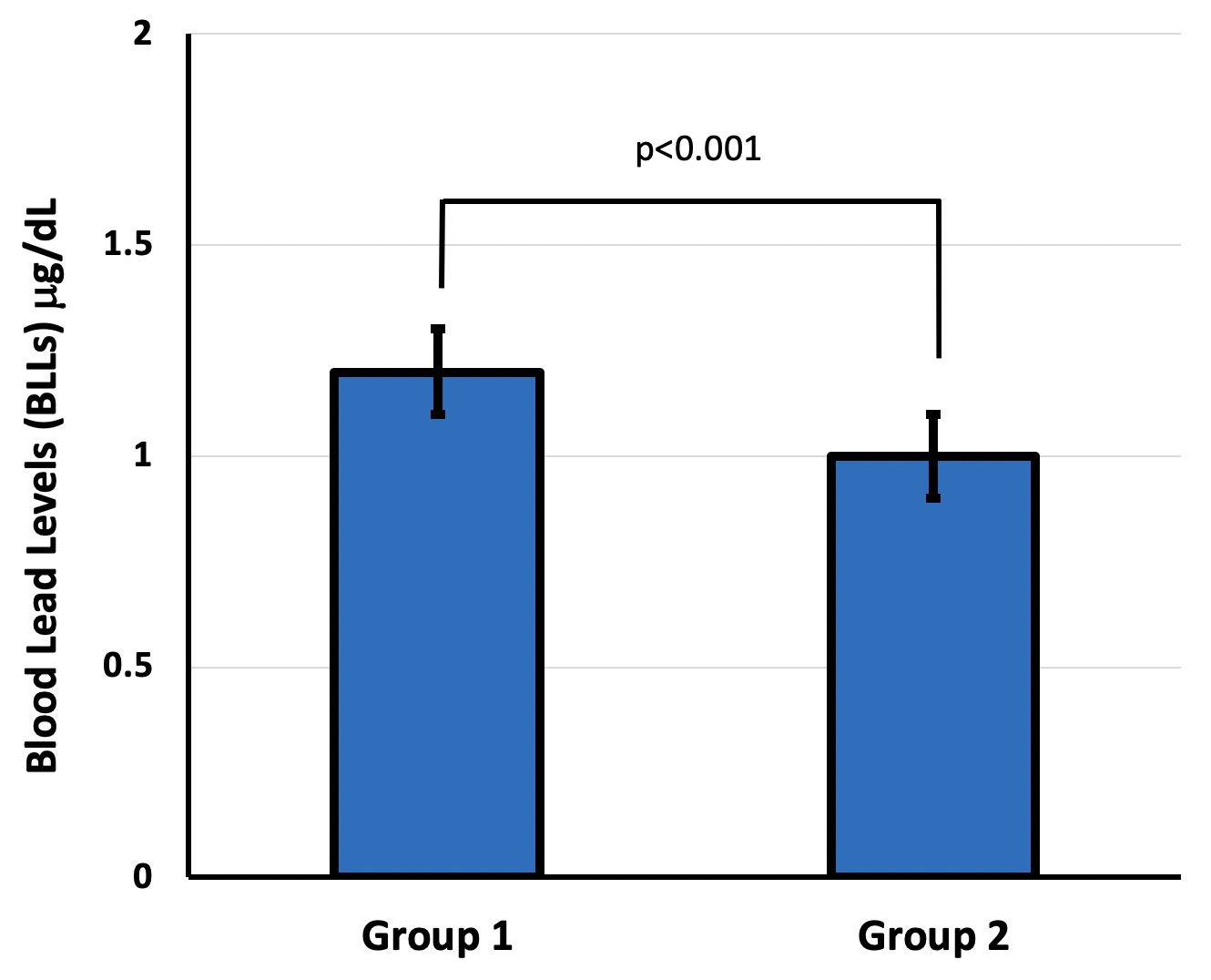General Pediatrics: Primary Care/Prevention
General Pediatrics 3
455 - The Covid-19 Pandemic and its Effect on Blood Lead Levels in Children: A Single Study Center
Saturday, April 29, 2023
3:30 PM - 6:00 PM ET
Poster Number: 455
Publication Number: 455.216
Publication Number: 455.216
Michelle Lee-Yuen, Maimonides Infants and Children's Hospital of Brooklyn, Brooklyn, NY, United States; Akanksha R. Stevens, Maimonides Infants and Children's Hospital of Brooklyn, Brooklyn, NY, United States; Shilpa Bansal, Maimonides Infants and Children's Hospital of Brooklyn, Brooklyn, NY, United States

Michelle Lee-Yuen, MD (she/her/hers)
Pediatric Resident PGY-3
Maimonides Children's Hospital
Brooklyn, New York, United States
Presenting Author(s)
Background: A common source of lead exposure in children who have elevated blood lead levels (BLLs) is from their homes.
Objective: This study aimed to investigate whether the COVID-19 pandemic had an effect on BLLs in children. The hypothesis of this study was that there would be a statistically significant mean increase in BLLs when examining pre-COVID-19 BLLs compared to data during the COVID-19 pandemic.
Design/Methods: This was a retrospective study of children’s BLLs at a New York City hospital’s three outpatient pediatric primary care clinics. Data was compared from 7/1/2019 - 6/30/2020 representing pre-COVID-19 pandemic data (group 1) and 7/1/2020 - 9/13/2021 representing the time during the COVID-19 pandemic (group 2) and when shelter-in-place occurred. The study included 909 children who were between the ages of 9 months and 6 years and had their BLL tested during both time periods. BLLs for all individuals during the two time periods were compared using a paired t-test. The primary outcome was to determine if pre-pandemic BLLs were significantly different from levels during the pandemic.
Results: This study was performed retrospectively with a fixed sample size; n=909. BLLs differed significantly between group 1 and group 2 (1.2 mg/dL [95% CI 1.1-1.3] and 1.0 mg/dL [95% CI 0.9-1.1] respectively; p< 0.001). Average BLLs in group 2 were lower than group 1. Secondary analyses performed included omitting patients in group 1 who had an elevated lead level > 3 mg/dL (n=842) and there was no statistical significance between the two groups (0.759 mg/dL [95% CI 0.761-0.870] and 0.812 mg/dL [95% CI 0.753-0.870] respectively; p >0.583). The data was analyzed using only patients > 1 year old (n=786) and there was a statistically significant mean difference in lead levels (1.25 mg/dL [95% CI 1.10-1.39] and 0.994 mg/dL [95% CI 0.91-1.08]; p< 0.001).
Conclusion(s): BLLs differed significantly in the two groups, however the average was lower in the COVID-19 pandemic group (group 2). We hypothesized more time inside one’s home would lead to elevated BLLs in children, but this was not shown. A similar outcome was seen when analyzing mean BLLs and omitting children < 1 year old. This could be due to numerous public health measures in New York City or scrupulous cleaning that occurred during the COVID-19 pandemic. This study has added to the literature by analyzing BLLs of children living in a US urban city, who are at risk for high lead exposure and are unable to attend school for an extended period of time.

